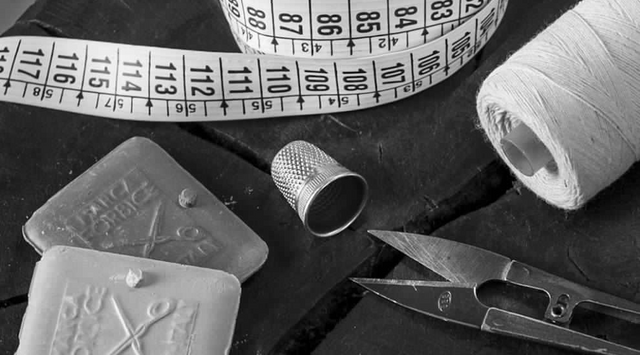Tailored jacket: how it's made
Tailored jacket: how it's made
REVERS:
The edges of the lapels are pierced with a needle before sewing so that the distance between the stitches can be identical.
When the stitches are not made by hand, a machine called AMF simulates the imperfect seams of a manual process.
SHOULDER:
The construction of the shoulder of a jacket is somewhat complex.
The seam of the shoulder strap must appear relaxed and not curled (the armholes are supported by very light padding), while in the case of a sleeve inserted "in shirt" a curl is naturally created in the upper part of the shoulder which gives the garment a less formal look .
DRAWING:
The design of the jacket must match perfectly on the greatest number of seams, especially on the pocket but also between shoulder and chest.
Sometimes some technical limitations do not allow to reach absolute perfection, but generally we try to make sure that at least the front of the jacket has a homogeneous design.
SLOT:
The buttonholes of a tailored jacket are usually sewn by hand and have an elongated shape that tends to widen only at the end to leave room for the shank of the button.
Some tailors make a drop-shaped eyelet which, precisely because of this particular shape, differs from the eyelets of the jackets made in series.
LINING:
The most common material used to line jackets is a synthetic fiber (cupro or viscose) made from natural raw materials and more rarely silk is used.
In correspondence of the armpit is inserted a crescent attached by hand of the same material with which the lining is made.
FESSINO OPEN:
Tailored jackets have open eyelets and the cuffs can be completely unbuttoned.
The sleeve is finished with a straight cut and parallel to the buttonholes. Industrial packs have an oblique cut and glued sleeve bottom.
INTERNAL POCKETS: The internal pockets are finished on the perimeter with the same fabric as the jacket to enrich the value of the garment itself.
BUTTONS:
The buttons are made strictly in natural materials (horn and corozo).
They are attached by hand and have a leg that separates them from the fabric of the jacket.
BETWEEN NECK AND REVER ...
Between the collar and the lapel of the jacket (in this case with a lance) some stitches are made by hand to join these two parts while leaving intact the softness and the line of the rever itself.








